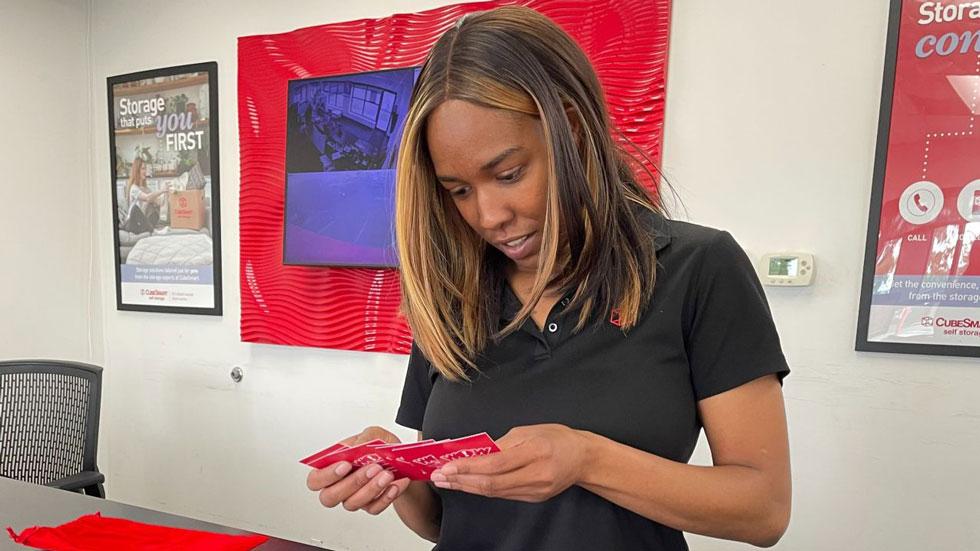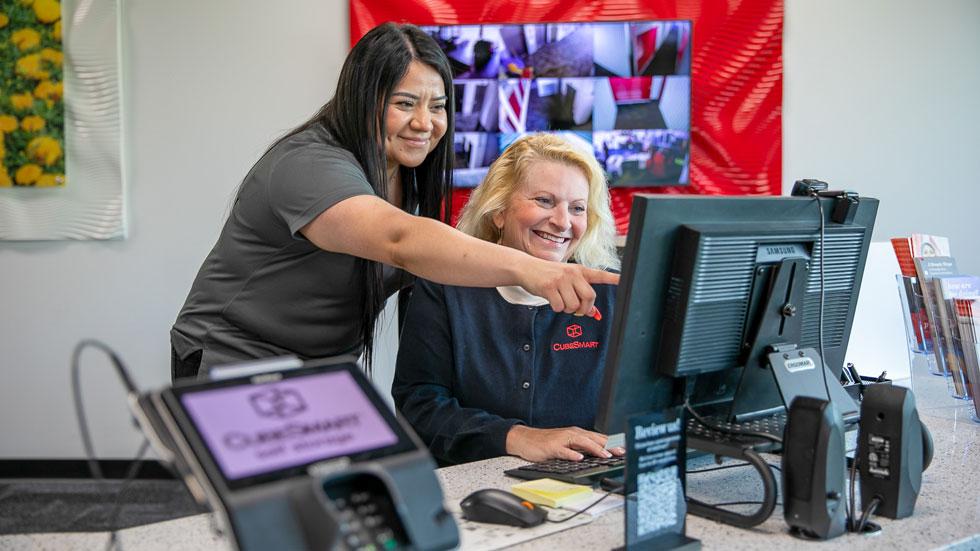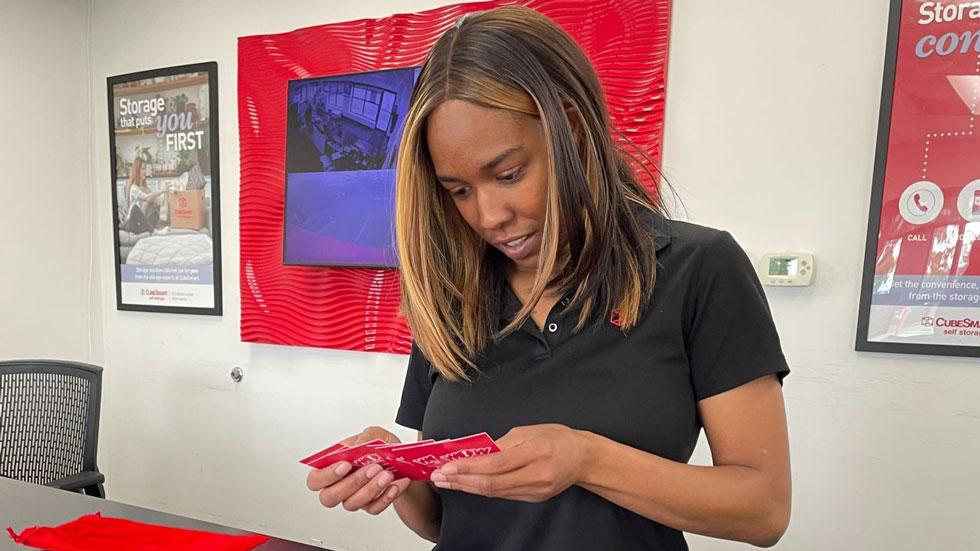
CubeSmart (NYSE: CUBE) has sought to carve out a competitive edge by redefining what customer service looks like in the 21st century. The self-storage REIT’s drive to continually raise the bar on customer service has shaped nearly every aspect of the business, from technology investments to employee training.
“We define a key component of our competitive advantage as the way we serve our customers. Unparalleled service is one of the pillars of our mission,” said Jennifer Schulte, chief human resources officer at Malvern, Pennsylvania-based CubeSmart.
CubeSmart’s heavy focus on customer service stems from a rebranding launched in 2011. That year, the company (formerly called U-Store-It) adopted its current moniker and mission statement, marking a shift away from a self-service model to a “high-touch,” personalized approach to customer service. Among other things, that means allowing customers to engage with the company in whatever ways suit them best, whether fully digitally, in person only, or a mix of both.
“We try to give our customers more than what they expect,” Schulte said. “We talk a lot about our goals to surprise and delight them. It’s about tailoring service to their needs and being proactive” in our approach to communicating with them and problem solving.
Empowering Teammates, Elevating Service

Strong customer service begins with cultivating a company culture where employees (or teammates, as they’re known at CubeSmart) are equipped to do their jobs, have a say in the way things are run, and are motivated to go above and beyond, Schulte noted.
The company’s hands-on training program for new hires — many of whom come from the high-turnover retail industry — plays a big role in reinforcing its culture. New hires are trained by teammates who have firsthand experience in the same roles, ensuring that guidance comes from those who truly understand the day-to-day responsibilities of a position. They not only learn the technical aspects of managing a property but also how to communicate with customers in preferred ways.
For instance, new hires and their trainers use role-playing cards to work through real-world scenarios, whether engaging with a customer who is using self-storage for the first time or with an existing customer who wants to make a change and move their location or type of storage unit. “It’s not just about how to do the job,” Schulte said, referring to the training program. “It’s how to do the job and how to provide the best service.”
Engagement Drives Service
Workforce engagement is another key ingredient to deliver strong customer service, Schulte said. That’s because engaged employees are motivated to go above and beyond their basic job duties, which translates into service that exceeds customer expectations, she added.
CubeSmart measures employee engagement through a yearly survey conducted through a third party. The survey gauges whether teammates feel their opinions matter and whether they feel supported by managers, among other factors. In 2024, the company had a 91% response rate to the survey and an overall engagement score exceeding the national average.
CubeSmart has other ways of listening to employees, including a customer service committee made up of teammates from different levels of the organization and departments. Akin to an employee focus group, the committee provides leadership with feedback about what’s working, what’s not, and how customers might respond to different initiatives. The feedback is shared with the right teams and, when necessary, action plans are developed.

“It’s really important to us that our teammates understand that they have a voice and that we take [their opinions] seriously and make changes so that they can serve the customer in the best possible way,” Schulte said.
Giving their teammates opportunities to learn, advance, and be heard — along with recognizing their contributions in various ways — has helped CubeSmart maintain a relatively low level of turnover. Its annual employee turnover rate is in the low 40% range, which, according to Schulte, is a strong result for a business with retail-like operations. In the retail industry, the turnover can be as high as 100% a year, she said. CubeSmart has 3,100 teammates, with 2,800 working outside the corporate office in support of its more than 1,500 properties, or “stores.”
Service-Enhancing Technology
In addition to investing in its workforce, CubeSmart has invested heavily in back- and front-end technology that has helped the company to cultivate stronger connections with customers and adapt to their evolving preferences.
“Ultimately, our goal is to deliver a convenient, simple, and tailored experience based on a customers’ history and preferences,” said Amy Cross, executive vice president for technology, data science and marketing.
A veteran of the hospitality industry, Cross joined CubeSmart in 2018 and began to oversee technology investments that would enable the company to provide the kind of personalized, high-touch service consumers have come to expect from major hotel and retail brands.
Two years into her role at CubeSmart, the onset of the pandemic created a greater sense of urgency when it came to digitizing the business, according to Cross. With many stores under lockdown, CubeSmart had to pivot from serving customers almost exclusively in person to serving them entirely remotely.

As they say, necessity is the mother of invention. During the pandemic, the company rolled out a proprietary mobile app and enhanced its website to allow customers to rent a unit, from lease signing to bill paying, without speaking to a teammate or stepping foot in a store.
In the years since the pandemic, CubeSmart has continually enhanced and optimized the website’s user experience based on customer data and insights, said Cross, noting that 60% of business is conducted through the site.
“Our website is a unique e-commerce solution. It essentially provides an end-to-end digital experience for the customer,” she added.
The Pandemic’s Long Shadow
While a lot has changed since the pandemic, some customers still prefer a fully digital experience, Cross noted. Others want traditional, face-to-face service, and many fall somewhere in between, preferring a hybrid approach.
CubeSmart relies on a data platform that, according to Cross, provides a “unified view” of each customer, giving the company insights into individual preferences and making it easier to connect on a personal level. In the near future, when customers call CubeSmart’s contact center, the database will immediately provide agents with those details including a full history, their preferences, and specific needs to ensure a higher level of service.

“As consumers, we expect businesses to know us,” Cross said, whose previous employers included The Walt Disney Company and the former Host Marriot Services Corp. “When I go to, say, Nordstrom, I expect them to know what I bought last week or at the store across town. Our business is no different. We want customers to feel like we know who they are,” she added.
CubeSmart isn’t resting on its laurels when it comes to technology. The company continues to test new ideas and refine existing programs. For instance, it will soon launch an in-store “digital decal experience” that allows customers to use their smartphones to scan a QR code and then choose from a menu of service options to meet their specific needs, including chatting with a live agent, paying a bill, or renting a unit.
CubeSmart will roll out the program after testing in-store kiosks that allow customers to connect via video with live agents. It found that while some customers like the kiosks, many want more choices in terms of how they interact with us, both face-to-face and virtually.
“If you are in a store and the teammates are busy with other customers, you can click on the decal, and it takes you to the landing page where options are presented,” Cross explained. “It’s basically emulating the in-store experience through this system.”
Leveraging AI
Behind the scenes, CubeSmart uses AI-driven technology to boost website traffic, drive operational efficiencies, and support other business functions. But it’s also using AI to connect with customers who prefer to interact digitally.
Customers visiting its website, for instance, can exchange messages with a generative AI chatbot. In addition, customers who call its contact center and don’t want to wait for a live agent can exchange text messages with a chatbot. So far, CubeSmart has been using chatbots to field relatively simple questions from customers. But it is also training them to handle more complex interactions.
“We’re in the people business, and so we like to see our teammates engaging with customers,” Cross said. “But at the same time, if we can leverage generative AI for specific tasks in order to free up our teammates to be able to offer high-touch services, we should. The technology is moving pretty fast. So, why not take advantage of it and maximize our relationship with customers.”

